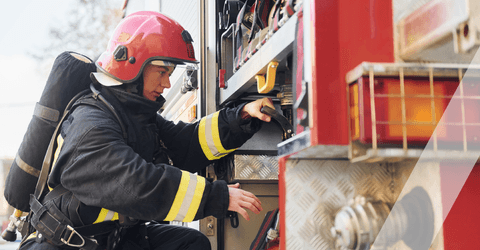
This article will help you choose the right PPE for the task at hand and navigate the equipment you need for a safe and comfortable workplace.
As workers’ safety is a number one priority, supervisors should consider all the options available when selecting PPE. It can get confusing to know what qualities to look for across a variety of industries. We're here to provide you with expert advice and guidance.
There are four key factors that should be considered when selecting PPE.
PPE used in the incorrect climate can cause accidents and put workers at risk. PPE which is too bulky for a hot environment may cause fatigue.
But if it’s too light for a cold climate workers can also be uncomfortable and have decreased coordination. In each circumstance, the wrong kit could lead to unnecessary injury or accidents.
Finding climate-adjustable clothing, (such as PPE that can be zipped open or closed) can help keep workers comfortable without sacrificing safety.

As each industry has different requirements and regulations, there is no one size fits all solution with PPE.
The industry you work in will influence the PPE you use. For example, if your employees are working near a fire threat the PPE shouldn’t be made of HPPE (high-performance polyethene) as it could melt onto the skin.
If your industry has specific requirements there are likely to be standards that exist and appropriate recommended PPE to meet these standards.
Establishing a risk or hazard assessment can highlight where extra PPE could be necessary. As mentioned previously the industry standards will help point you in the direction of the PPE required to protect your staff.
But by making an in-depth risk assessment, you can highlight areas where you can better provide your staff with protective equipment that could improve their comfort and working conditions.
Balancing safety and comfort is a significant point of contention. If workers are uncomfortable, it decreases morale and increases the chances of careless accidents. If the PPE you provide doesn’t fit correctly, people are less likely to use it putting your employees at risk.
In many cases, women are given men’s PPE but a few sizes smaller. Female-fit PPE ensures that female members of staff have the correctly fitting clothing and aren’t at risk because ill-fitting PPE hinders their work.
The best way to avoid providing safety equipment, which is too uncomfortable, is to not overcompensate. Overcompensating with PPE often leads to heavy bulky protection which is above the recommended rating.
By sticking with the recommended protection, you are more likely to provide the correct equipment you need for the work at hand.
Don’t go overboard, and if you feel the need to make additional changes why not ask your employees what extra equipment they might need?
Safety legislation can be a useful starting point for meeting the basic PPE requirements. However, legislation isn’t always cut and dry. Looking at the appropriate regulatory bodies can help paint a more accurate picture of what kind of PPE you might need.
Regulatory bodies are a valuable resource when it comes to choosing the right PPE as they have direct experience in implementing legislation and interpreting acts and codes.
Safety data sheets (SDS) outline the PPE requirements and safe storage practices for controlled products.
Looking at the safety sheet shows what PPE the manufacturer recommends. For example, manufacturers may recommend wearing a face shield, safety goggles or chemical-resistant gloves as protection when handling a hazardous product.
Using the SDS eliminates the confusion about what PPE requirements are needed for managing products.